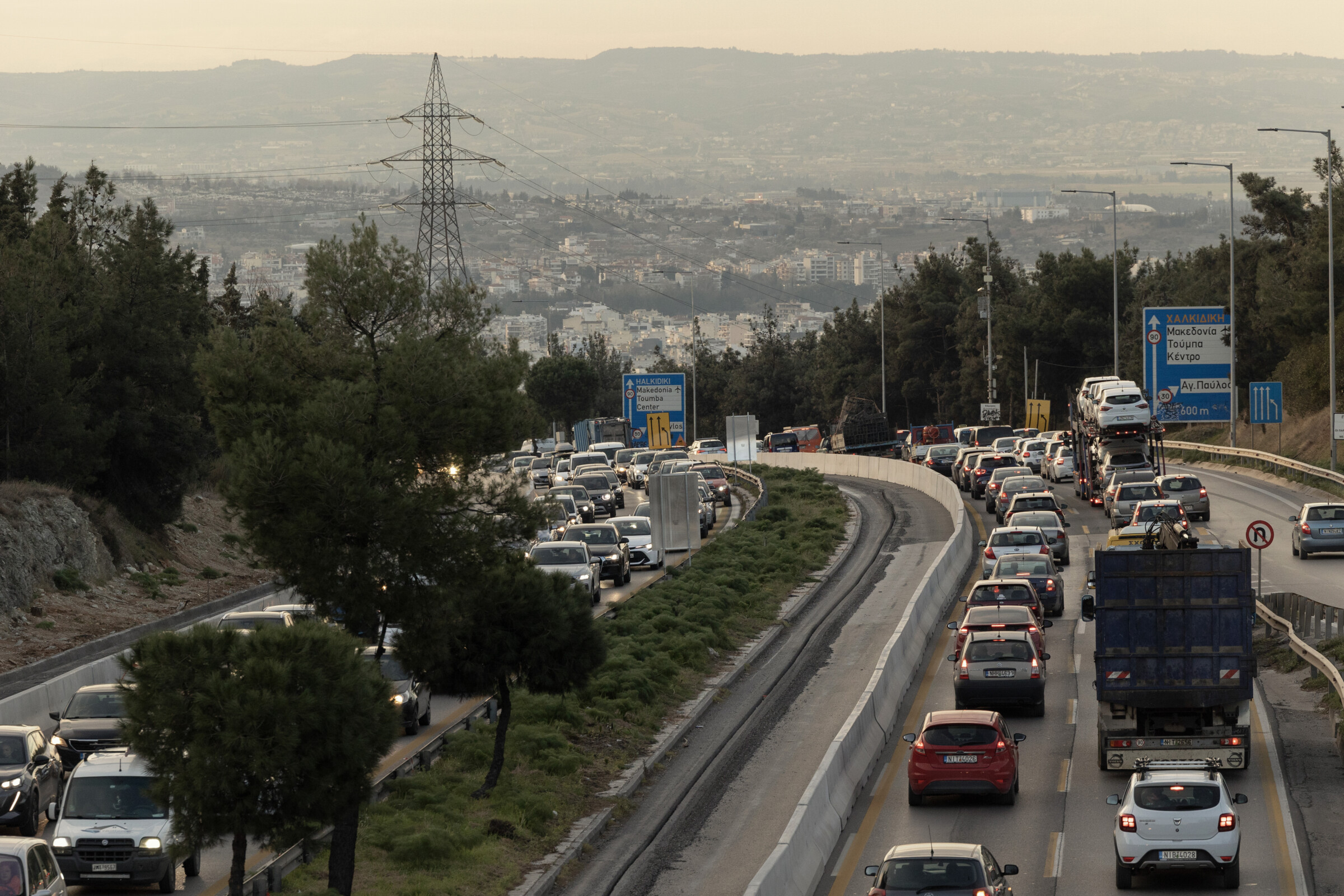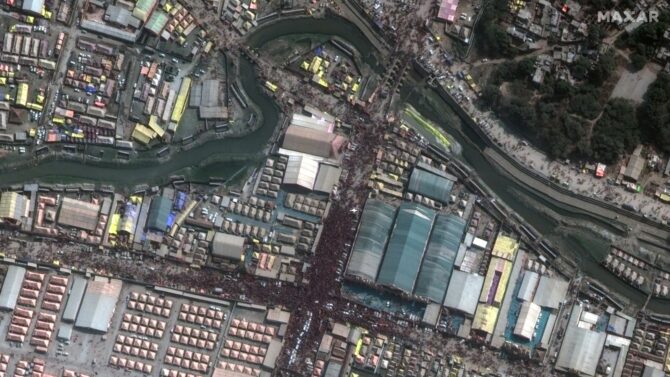Journalist Sofia Christoforidou describes the story behind her report on air pollution in Thessaloniki and Ioannina. The investigation was conducted in collaboration with journalist Giorgos Tsantikos, as part of this year’s iMEdD incubator for local media.
I had been covering the issue of air pollution as a journalist for years, especially after Greece was condemned by the European Court of Justice for failing to take appropriate measures to address the high concentrations of particulate matter in Thessaloniki’s atmosphere. I watched as the problem of limit exceedances persisted without any action being taken – the Region insisted it wasn’t responsible and the Ministry of Environment provided no clear answers.
So, when iMEdD’s incubator for local media was announced this year, I had no doubts about the proposal I wanted to submit. Since the investigation had to include another city as well, I immediately thought of Ioannina, which faces an equally serious problem with particulate matter. I called Giorgos Tsantikos of typos-i.gr, whom I had met at an iMEdD conference, and he told me that he, too, had been considering proposing this very topic. Although we explored other ideas, we eventually settled on the original, as we knew that air pollution is a serious problem – concerning both environmental protection and public health – and should be high on the public agenda.
Wildfire Reporting — Expert Advice on Emerging Issues, Recurring Risks

Two California-based journalists offer some reporting best practices, logistical tips, and safety precautions to take when covering wildfires.
In the Beginning, There Was Data
At the start of the investigation, we reached out to the Aristotle University of Thessaloniki and the University of Ioannina to learn more about the specific characteristics of particulate pollution. We then sought out the most recent scientific papers, especially those referring to the two cities, and spoke with researchers. We tried to correlate elevated levels of airborne particles with health issues in both cities, but we hit a wall: there were no relevant epidemiological studies, nor any available data on hospital admissions to pulmonary clinics that could be cross-referenced with days of high particulate concentrations.
Next, we aimed to document that the problem has been persistent and continues to this day. The Ministry of Environment’s annual reports (the most recent from 2023), present the data in two forms:
(a) for the average annual value, measurements are shown in µg/m³;
(b) for the average daily value, absolute measurements are not presented, only the number of days exceeding the EU limit.

It is worth noting that Thessaloniki has data from six monitoring stations, while Ioannina has only one. To make matters more complicated, the Ministry has published tables with daily particulate concentrations both before and after deducting the contribution of dust. There were also tables with hourly 24-hour measurements for the period 2017–2020. In these datasets, there were periods of several weeks where entries were marked as -9999, indicating that the monitoring stations were either malfunctioning or undergoing maintenance.
So which data should we use? The more detailed ones that stop at 2020, or the more summarized ones that continue to 2023? We turned to the regional authorities. The Region of Epirus publishes daily measurement results once a month, at the start of the following month, in a PDF file. The Region of Central Macedonia uploads the maximum (not average) pollutant concentration values recorded the previous day each noon, alongside the range between the lowest and highest measurements. It became clear that the available data were neither directly comparable nor immediately usable. We had to request the most recent data (2024) from the Region of Central Macedonia, process them, and enter them—together with the Ministry’s data (2017–2024)—into our own Excel spreadsheets to verify whether the limit exceedances were continuing.
Why Any Reporter Can Now Source Free, Quality Satellite Images of Almost Anywhere on Earth

Journalists can now get free high-resolution satellite images from around the world in minutes, without any specialized knowledge.
Seeking Answers
In the next stage of the report, we sought answers from the Ministry of Environment regarding the measures it had taken – or planned to take – to address the problem in Thessaloniki and Ioannina. The course of the investigation depended on their response. We waited for two months, but unfortunately received no reply. However, in journalism, no answer is also an answer.
The Ministry’s most recent response on the matter came in December 2023, during a relevant parliamentary question. It stated that in December 2022, an implementation study had been prepared to address particulate matter exceedances in Thessaloniki, and that “the proposed measures are being reconsidered in terms of how and when they will be implemented.” Three years had passed since its completion, yet the study remained in obscurity: it hadn’t been made public, there had been no public discussion, and even members of the Regional Council and MPs who had submitted formal inquiries were unaware of its contents. After multiple requests to the competent department of the Ministry, its press office, and OFYPEKA, I managed to gain access to the study, which included the measures Greece would propose to the European Commission. At that point, I decided to compare the proposed measures for the period 2022–2025 against the reality of 2025. Bingo! It turned out that essentially no measures had been implemented, and air pollution measurements confirmed that nothing had changed two years after the European Court’s condemnation.

In Ioannina, we found that instead of concrete measures to address the problem, there were merely recommendations for vulnerable groups on days when air pollution hit “red alert” levels, along with hopes for a future expansion of the natural gas network in the city. Together with Giorgos, as well as Nikolas Aronis and Dimitris Bounias from iMEdD, we shared the excitement each time we uncovered a new study or piece of evidence that advanced the investigation, as well as the frustration when we became entangled in bureaucracy. Alexandros Avramidis also joined the team, tasked with illustrating a subject that… cannot be seen, but with his unique perspective, he managed to capture faces and aspects of both cities, helping readers immerse themselves in our story. After many video calls with the entire iMEdD team, countless emails, two trips to Thessaloniki and Ioannina, and data and interviews we ultimately did not use, we completed our story in… just 7,500 words! Truthfully, we could have filled a book. We thank iMEdD for igniting the spark and supporting us in bringing our idea to life.
We hope that our investigation will serve as a catalyst for institutional answers to be sought and, ultimately, for effective measures to be taken. Otherwise, the problem will continue, residents’ health in both cities will deteriorate, and our country will remain at the risk of a new condemnation by the European Court of Justice.
The project is published in Greek in three local media outlets.

